How to Train Claude 3.5 Sonnet AI?
How to Train Claude 3.5 Sonnet AI? training sophisticated models like Claude 3.5 Sonnet AI has become paramount for businesses and developers seeking to leverage cutting-edge technology. This comprehensive guide delves into the intricate process of training Claude 3.5 Sonnet AI, offering insights, best practices, and strategies to ensure your AI model is both robust and efficient. Whether you’re a seasoned AI practitioner or a newcomer eager to explore the possibilities, this article provides a roadmap to mastering the training of Claude 3.5 Sonnet AI.
Understanding Claude 3.5 Sonnet AI
Before diving into the training process, it’s essential to grasp what Claude 3.5 Sonnet AI represents. Claude 3.5 Sonnet AI is an advanced language model developed to understand and generate human-like text based on the input it receives. Building upon previous iterations, the 3.5 version incorporates enhanced algorithms, increased data processing capabilities, and improved contextual understanding, making it a powerful tool for a variety of applications, from customer service bots to content creation.
The Importance of Training AI Models
Training AI models like Claude 3.5 Sonnet AI is not merely about feeding data into an algorithm. It’s about sculpting the model’s ability to understand, interpret, and generate responses that are both relevant and coherent. Proper training ensures that the AI can handle diverse inputs, adapt to various contexts, and provide outputs that align with user expectations and organizational goals.
Enhancing Accuracy and Reliability
A well-trained AI model exhibits higher accuracy in its responses, reducing the likelihood of errors that could lead to misunderstandings or misinformation. Reliability is crucial, especially in applications where AI interactions directly impact user experience and satisfaction.
Facilitating Scalability
Training sets the foundation for scalability. As your needs grow, a well-trained Claude 3.5 Sonnet AI can handle increased data loads and more complex tasks without compromising performance, ensuring that your AI infrastructure remains robust and efficient.
Customization and Personalization
Training allows for customization tailored to specific industries, languages, or user demographics. By fine-tuning the model with relevant data, you can achieve a level of personalization that resonates with your target audience, enhancing engagement and satisfaction.
Preparing for Training
Embarking on the training journey requires meticulous preparation. This phase sets the stage for a successful training process, ensuring that the model is equipped with the necessary resources and guidelines.
Defining Objectives
Clear objectives guide the training process. Determine what you aim to achieve with Claude 3.5 Sonnet AI. Are you focusing on customer support, content generation, or data analysis? Defining your goals will influence the training data, methodologies, and evaluation metrics you employ.
Gathering Quality Data
Data is the lifeblood of AI training. High-quality, diverse, and representative data sets are crucial for developing a model that can handle various scenarios and inputs. Ensure that your data is clean, well-structured, and free from biases that could skew the model’s performance.
Setting Up the Environment
Establish a conducive environment for training. This includes selecting appropriate hardware, ensuring adequate computational resources, and configuring the necessary software frameworks and libraries that support Claude 3.5 Sonnet AI.
The Training Process
Training Claude 3.5 Sonnet AI involves several stages, each critical to the model’s development and performance.
Data Preprocessing
Before feeding data into the model, it undergoes preprocessing to enhance quality and relevance. This step includes:
- Cleaning: Removing duplicates, correcting errors, and eliminating irrelevant information.
- Normalization: Standardizing data formats to ensure consistency.
- Tokenization: Breaking down text into manageable units (tokens) that the AI can process.
- Augmentation: Enhancing the data set by introducing variations to improve the model’s robustness.
Model Architecture Configuration
Claude 3.5 Sonnet AI’s architecture must be meticulously configured to align with your objectives. This involves selecting appropriate layers, activation functions, and optimization algorithms that facilitate efficient learning and performance.
Training Algorithms and Techniques
Implementing effective training algorithms is pivotal. Techniques such as supervised learning, unsupervised learning, and reinforcement learning can be employed based on the desired outcomes. Additionally, leveraging transfer learning by utilizing pre-trained models can expedite the training process and enhance performance.
Iterative Training and Validation
Training is an iterative process, requiring continuous refinement. Regular validation against a separate data set ensures that the model generalizes well and avoids overfitting. Monitoring metrics such as loss functions, accuracy, and precision helps in assessing progress and making necessary adjustments.
Fine-Tuning and Optimization
Once the initial training phase is complete, fine-tuning and optimization further enhance Claude 3.5 Sonnet AI’s capabilities.
Hyperparameter Tuning
Adjusting hyperparameters like learning rate, batch size, and epochs can significantly impact the model’s performance. Systematic experimentation and optimization ensure that the model learns effectively without overfitting or underfitting.
Incorporating Feedback Loops
Implementing feedback mechanisms allows the model to learn from real-world interactions. User feedback, error analysis, and performance monitoring provide valuable insights that inform subsequent training iterations and improvements.
Enhancing Contextual Understanding
Improving the model’s ability to grasp context is crucial for generating relevant and coherent responses. Techniques such as context windowing, memory mechanisms, and attention layers contribute to a deeper understanding of nuanced inputs.
Deployment and Integration
Training Claude 3.5 Sonnet AI is only part of the journey. Deploying and integrating the model into your existing systems ensures that it delivers tangible value.
Choosing Deployment Platforms
Select appropriate platforms for deploying your AI model, considering factors like scalability, security, and compatibility with your existing infrastructure. Cloud-based solutions offer flexibility and ease of integration, while on-premises deployments provide greater control over data and processes.
Ensuring Seamless Integration
Integrate Claude 3.5 Sonnet AI seamlessly with your applications, whether it’s a website, mobile app, or internal system. Utilize APIs, SDKs, and other integration tools to facilitate smooth communication between the AI model and your platforms.
Monitoring and Maintenance
Continuous monitoring is essential to maintain optimal performance. Implement monitoring tools to track metrics like response times, accuracy, and user interactions. Regular maintenance, including updates and retraining, ensures that the AI remains effective and up-to-date with evolving requirements.
Best Practices for Training Claude 3.5 Sonnet AI
Adhering to best practices enhances the efficiency and effectiveness of the training process, leading to superior AI performance.
Emphasize Data Quality Over Quantity
While having a large data set is beneficial, the quality of data holds paramount importance. Focus on curating data that is relevant, accurate, and representative of the scenarios your AI will encounter.
Balance Bias and Variance
Strive for a balance between bias and variance to ensure that the model generalizes well without being overly simplistic or excessively complex. Techniques like regularization and cross-validation aid in achieving this equilibrium.
Foster Continuous Learning
AI models benefit from continuous learning. Regularly update the training data to incorporate new information and trends, enabling Claude 3.5 Sonnet AI to stay current and adaptable.
Prioritize Ethical Considerations
Ethical training practices prevent the propagation of biases and ensure that the AI operates within acceptable societal norms. Implement fairness assessments and bias mitigation strategies to uphold ethical standards.
Overcoming Common Challenges
Training advanced AI models is not without its challenges. Understanding and addressing these obstacles is crucial for successful deployment.
Managing Computational Resources
Training large models demands significant computational power. Optimize resource allocation, leverage cloud-based solutions, and employ efficient algorithms to manage resource constraints effectively.
Handling Data Privacy and Security
Protecting sensitive data during training is imperative. Implement robust security measures, comply with data protection regulations, and anonymize data where necessary to safeguard privacy.
Addressing Scalability Issues
As your AI needs grow, ensuring scalability becomes essential. Design your training infrastructure with scalability in mind, utilizing modular architectures and scalable cloud services to accommodate expanding demands.
Case Studies: Successful Training of Claude 3.5 Sonnet AI
Examining real-world applications provides valuable insights into effective training strategies and their outcomes.
Enhancing Customer Support
A leading e-commerce platform trained Claude 3.5 Sonnet AI to handle customer inquiries, resulting in faster response times and improved customer satisfaction. By fine-tuning the model with domain-specific data, the AI could address a wide range of queries with accuracy and empathy.
Revolutionizing Content Creation
A digital marketing agency leveraged Claude 3.5 Sonnet AI to generate high-quality content, reducing production time and costs. The model was trained on diverse content types, enabling it to produce engaging articles, social media posts, and promotional materials tailored to various audiences.
Streamlining Data Analysis
A financial institution employed Claude 3.5 Sonnet AI to analyze vast amounts of data, uncovering insights that informed strategic decisions. The AI’s ability to process and interpret complex data sets enhanced the organization’s analytical capabilities and competitive edge.
Future Trends in AI Training
As technology advances, the methodologies and tools for training AI models like Claude 3.5 Sonnet AI continue to evolve, opening new avenues for innovation and efficiency.
Integration of Multimodal Learning
Future training approaches will increasingly incorporate multimodal learning, enabling AI models to process and integrate information from various sources such as text, images, and audio. This holistic understanding enhances the model’s versatility and applicability across different domains.
Enhanced Transfer Learning Techniques
Advancements in transfer learning will allow models to leverage knowledge from diverse domains more effectively, reducing training time and improving performance. This adaptability is crucial for developing AI that can swiftly respond to changing requirements and environments.
Emphasis on Explainability and Transparency
There will be a growing emphasis on making AI models more explainable and transparent. Techniques that elucidate the decision-making processes of models like Claude 3.5 Sonnet AI will foster trust and facilitate better human-AI collaboration.
Conclusion
Training Claude 3.5 Sonnet AI is a multifaceted endeavor that combines technical expertise, strategic planning, and ethical considerations. By understanding the intricacies of the training process, adhering to best practices, and anticipating future trends, you can harness the full potential of Claude 3.5 Sonnet AI to drive innovation and achieve your organizational goals. Whether enhancing customer support, revolutionizing content creation, or streamlining data analysis, a well-trained AI model stands as a testament to the transformative power of artificial intelligence in the modern world.
FAQs
What is Claude 3.5 Sonnet AI capable of?
Claude 3.5 Sonnet AI is designed for generating sonnets, a specific form of poetry consisting of 14 lines with a specific rhyme scheme and meter. It can create poetic verses following traditional sonnet structures and themes.
How do I start training Claude 3.5 Sonnet AI?
To begin training Claude 3.5 Sonnet AI, you should provide it with a dataset of existing sonnets. These can include classic sonnets from poets like Shakespeare or Petrarch, as well as modern examples. The AI learns from these examples to generate its own sonnets.
What type of data does Claude 3.5 Sonnet AI need?
Claude 3.5 Sonnet AI requires a dataset of text files containing sonnets. It’s best to have a diverse range of sonnets to help the AI learn different styles, themes, and structures within sonnet writing.
How long does it take to train Claude 3.5 Sonnet AI?
The training time can vary depending on factors such as the size of the dataset, the computing power available, and the specific training configuration. Typically, it could take several hours to days to train an AI model like Claude 3.5 effectively.
Can Claude 3.5 Sonnet AI learn to mimic a specific poet’s style?
Yes, Claude 3.5 Sonnet AI can learn to mimic certain stylistic elements of the poets present in its training data. By exposing it to a significant amount of work from a particular poet, you can influence the style and tone of the sonnets it generates.


